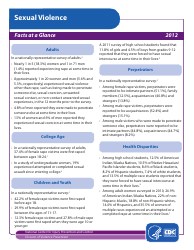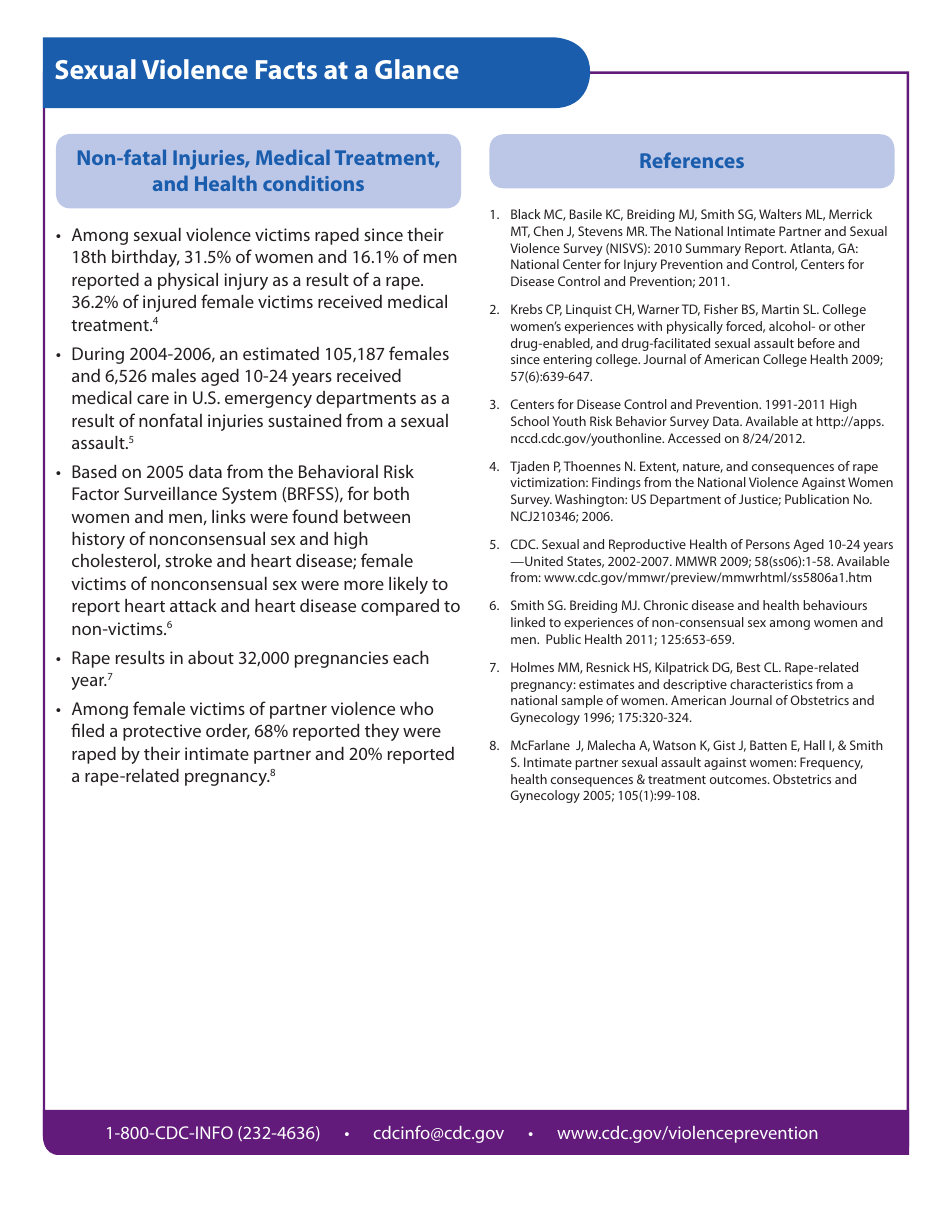Sexual Violence - Facts at a Glance
Sexual Violence - Facts at a Glance is a 2-page legal document that was released by the U.S. Department of Health and Human Services - Centers for Disease Control and Prevention and used nation-wide.
FAQ
Q: What is sexual violence?
A: Sexual violence refers to any form of unwanted sexual act or behavior committed against someone without their consent, including rape, sexual assault, and harassment.
Q: How common is sexual violence?
A: Sexual violence is unfortunately a widespread problem, with millions of people experiencing it worldwide.
Q: Who are the victims of sexual violence?
A: Anyone can be a victim of sexual violence, regardless of their age, gender, or background.
Q: What are the impacts of sexual violence?
A: Sexual violence can have severe physical, emotional, and psychological effects on the victims, often leading to trauma and long-term consequences.
Q: What can be done to prevent sexual violence?
A: Preventing sexual violence involves education, promoting consent, challenging harmful attitudes and behaviors, and supporting survivors.
Q: What are the laws regarding sexual violence?
A: Laws vary by jurisdiction, but sexual violence is generally considered a crime punishable by law. It is important to report incidents and seek legal recourse.
Q: How can I support someone who has experienced sexual violence?
A: Supporting someone who has experienced sexual violence involves listening without judgment, believing them, respecting their choices, and helping them access resources and support.
Form Details:
- The latest edition currently provided by the U.S. Department of Health and Human Services - Centers for Disease Control and Prevention;
- Ready to use and print;
- Easy to customize;
- Compatible with most PDF-viewing applications;
- Fill out the form in our online filing application.
Download a printable version of the form by clicking the link below or browse more legal forms and templates provided by the issuing department.







